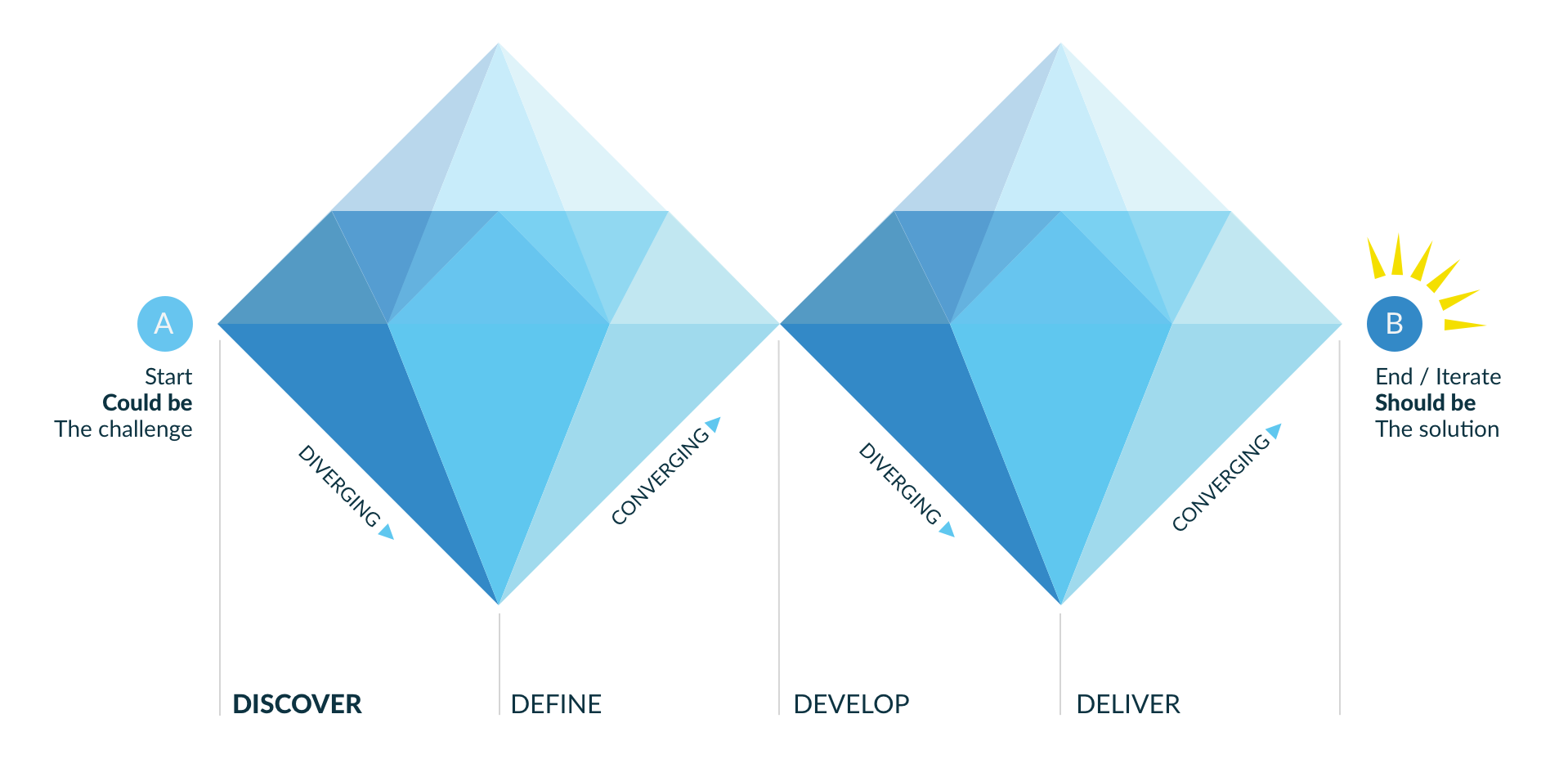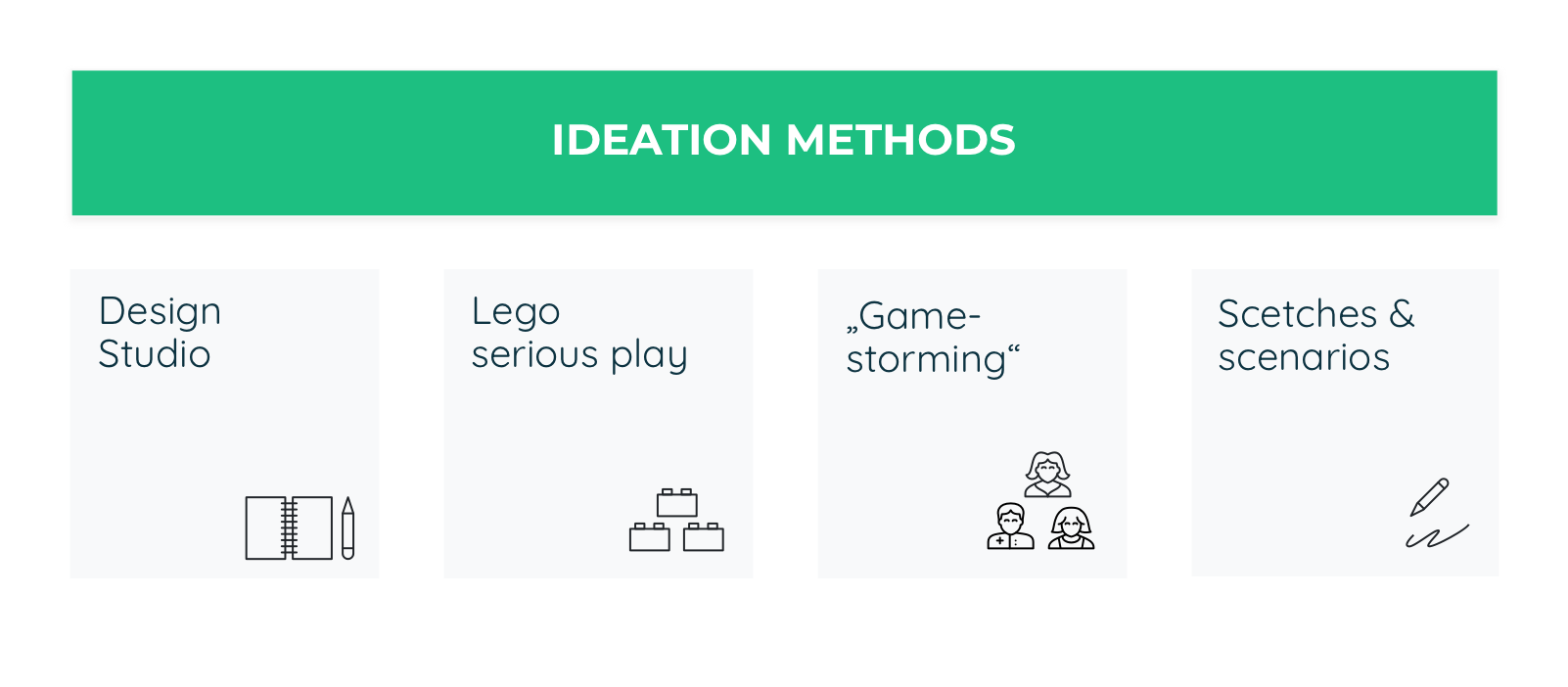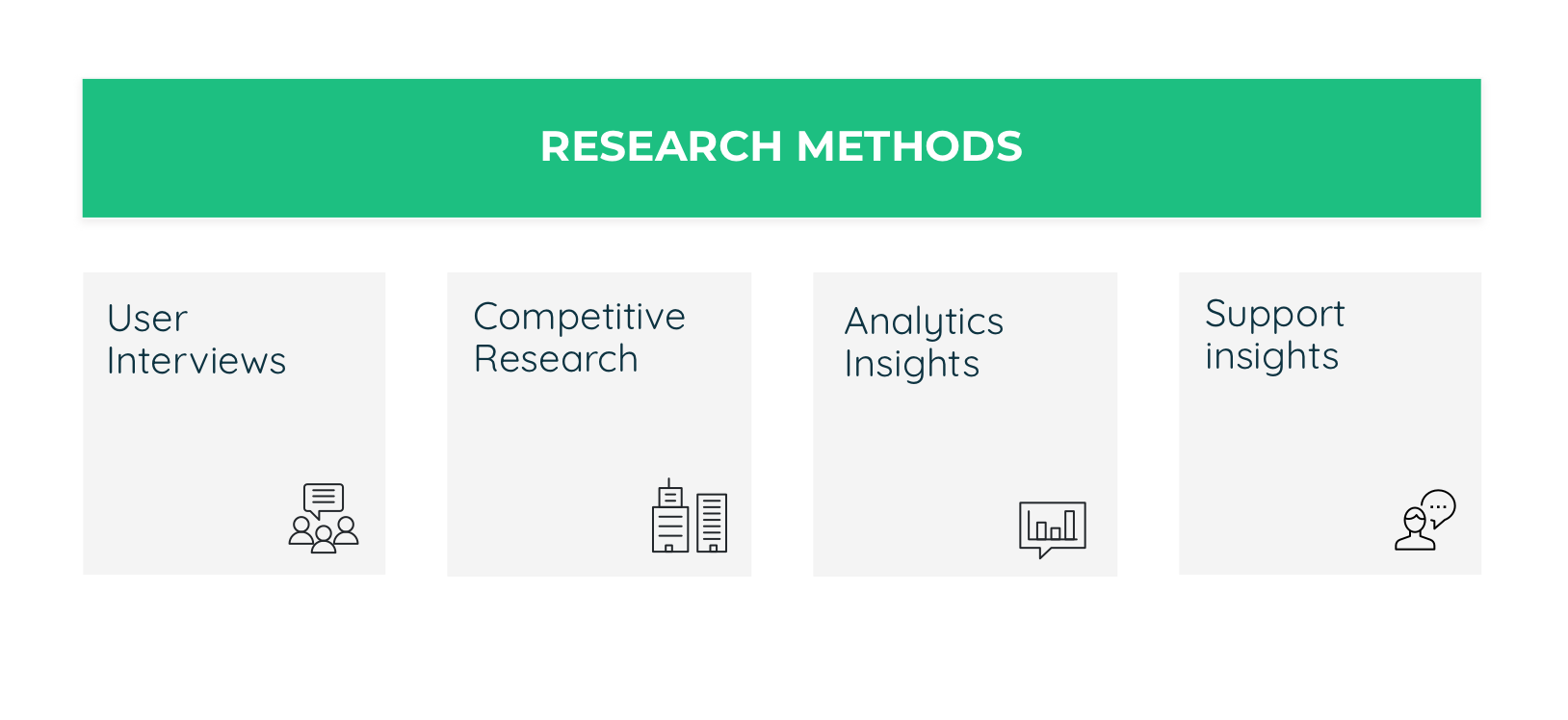
Methods
- Name:Discovery & Ideation
- Purpose:Requirements gathering
- Used at:Frequently
- Involved roles:CX, UXD, PO, Stakeholders, Developers
The discovery phase
Discovery and ideation form an integral part throughout the whole development process of products and services. Usually new products and services start out with a first deep dive into user goals and needs. Accompanied by competitive research and first ideation sessions with stakeholders.
Definition and main purposes
The Nielsen Norman Group defines the discovery as:".. a preliminary phase in the UX-design process that involves researching the problem space, framing the problem(s) to be solved, and gathering enough evidence and initial direction on what to do next. Discoveries do not involve testing hypotheses or solutions."
In ideation workshops ideas are generated by a cross functional team with and without stakeholders. There are many different methods for ideation workshops, like Design Studio or whole frameworks like Lego serious play. Google has its design sprints which packs discovery and design into continuous workshop sessions for one week.
But there are also much shorter formats like brainstormings. For all formats the basics are the same: gather a group of people with different backgrounds, generate lots of ideas and quickly evaluate them by the whole group to come up with a joint understanding.
Discovery phase in innovation framework
In the Design Councils innovation framework the double diamond every innovation project starts with a discovery phase in which the whole team tries to understand the problem mainly by gathering user and other research insights. But the discovery phase is not limited to the beginning of a project it should rather be part of any product or service increment where new functionality or optimisations are introduced.

Acitivites in the discovery phase
It´s not by accident that the activities of the discovery phase are the same activities for requirements gathering. It is only a question of goals. Insights from the a discovery for requirements gathering will help to create epics and user stories, in later stages these insights will help to create initial wireframes, prototypes and user interface designs.
Ideation methods

The best format for ideations is a offline workshop. The second best is an online workshop. The duration depends on your objectives, as mentioned above Design sprints consists of consecutive workshops within a couple of days up to a week. Design studio workshops range from 2 hours to 2 or 3 days.
For successful workshops with productive outcomes careful planning is the key. This includes time boxing for all activities. Which method to choose depends on your budget, your goals and on your participants abilities and willingness to step out of their comfort zones.
Research categories and methods

There are at least 4 areas for research in a discovery phase. 3 categories: Competitive research, analytics and support insights are mostly for optimisation projects. The most common and proofed method for user research are conducting interviews with users. These can be prospects of your future product or service or your own customers for optimisation projects.